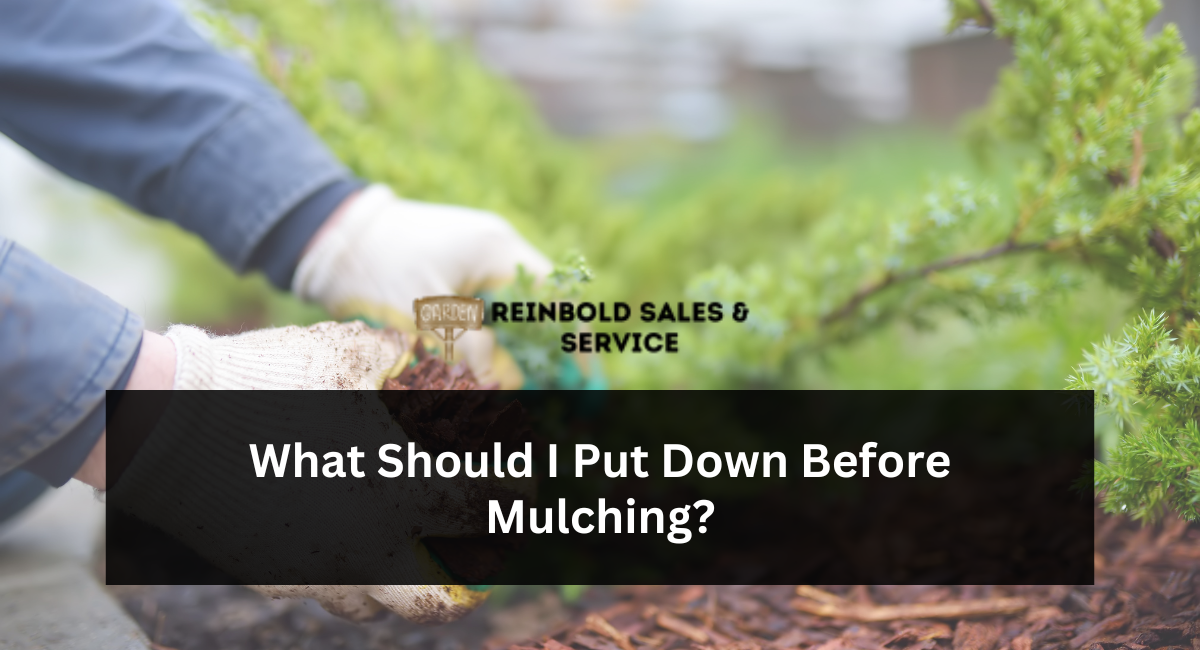Mulching your garden may appear straightforward; all it requires is shoveling, dumping, and spreading. But for optimal results, there are some steps you should take prior to and post-spreading that may make all the difference in success.
Start by clearing away any weeds. Next, use an edging tool to cut a clean edge between your garden bed and lawn. Finally, clear away leaves, debris, and old mulch before placing new mulch down.
Weeds
Mulch can smother small, young weeds and prevent new ones from sprouting, but it won’t do much against established ones. Therefore, spray these with nonselective chemical weed killers for 1 or 2 weeks before mulching to kill off weeds before the mulch takes effect.
Target a layer of organic mulch three to four inches thick around each plant or tree for maximum water conservation, stable temperatures in your soil, weed suppression without harming its roots, and root protection.
Do not use plastic sheeting or any impermeable fabric as mulch, as this prevents rainwater, airflow, and nutrients from reaching the soil. Furthermore, wood mulch near home sidings could trap excess moisture, inviting termites to build their nests.
Fertilizer
Mulch can do wonders for your garden, including shading roots on hot days, keeping moisture from evaporating, and controlling weeds. Furthermore, organic mulches made with decomposing material, such as bark or compost, work well. In contrast, plastic sheeting (including landscape fabric and rubber mulches) should not be used since these prevent rainwater, air, and nutrients from reaching the soil.
Before applying mulch, first clear away any large weeds and debris. After that, prepare the bed by raking up any remaining residue or twigs, loosening compacted mulch using a rototiller, hand cultivator, or rototiller and loosening any compacted areas using a rototiller or cultivator and pulling any weeds that have come through from beneath layers of mulch. Finally, watering the beds may help seal in moisture and remove any weeds that have come through from germinating; this may also provide an opportunity to apply an anti-emergent such as Preen pre-emergent weed killer, preventing any new growth before it even happens!
Water
Mulch is an effective way to maintain moisture in soil. But, to ensure its effectiveness, be mindful to cover only a small area; four inches or more should protect small weeds but not prevent water and nutrients from reaching plants beneath.
Baka recommends using organic or inorganic mulches such as shredded bark, compost, or hay as part of your landscaping design plan. Biodegradable organic mulches offer numerous nutrients to the soil, while inorganic stones like stone can block weeds but do not offer anything in return.
Be wary of using plastic sheeting or landscape fabric under your mulch, as this prevents natural rainfall and airflow into the soil, leading to depleted nutrients and potentially compacted conditions. Plastics also leach chemicals that contaminate it further, while piling mulch against plant stems or tree trunks may attract pests and cause disease outbreaks.
Conclusion:
In conclusion, soil preparation before mulching is vital for a thriving garden. Utilize organic matter, weed barriers, and proper spacing to enhance moisture retention and promote plant health.
